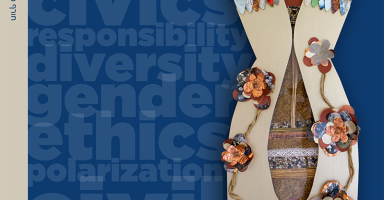In These Times
From the CEO: The Miracle of Jewish Day Schools
From the Board: B'Yachad: Together Toward a Vibrant Jewish Future
Professional Development Towards Becoming an Anti-Racist Jewish Day School
In the Issue: In These Times
May you live in interesting times. —apocryphal Chinese curse
In these times, this famous curse seems to be visited upon us. No matter where we live, the people we befriend or the shul we daven in (or not), we cannot help but be touched by the currents that have been running through our social and political worlds. The turbulence has swept over not only the United States but countries around the world as well. No one is an island, and no country or community is immune.
This issue of HaYidion...

This issue shows how Jewish day schools help students engage with serious social issues in ways that cast more light than heat. Whether the issues concern race or feminism, gun violence or identity, day schools of all kinds foster conversations and create programs that build understanding and give voice to opposing, often passionately held positions, while finding paths to achieve communal unity amidst divisiveness. They do so by adhering to the school's mission and to those values that unite us.
Click here to download the pdf and printer-friendly version of HaYidion.
Articles From This Issue







